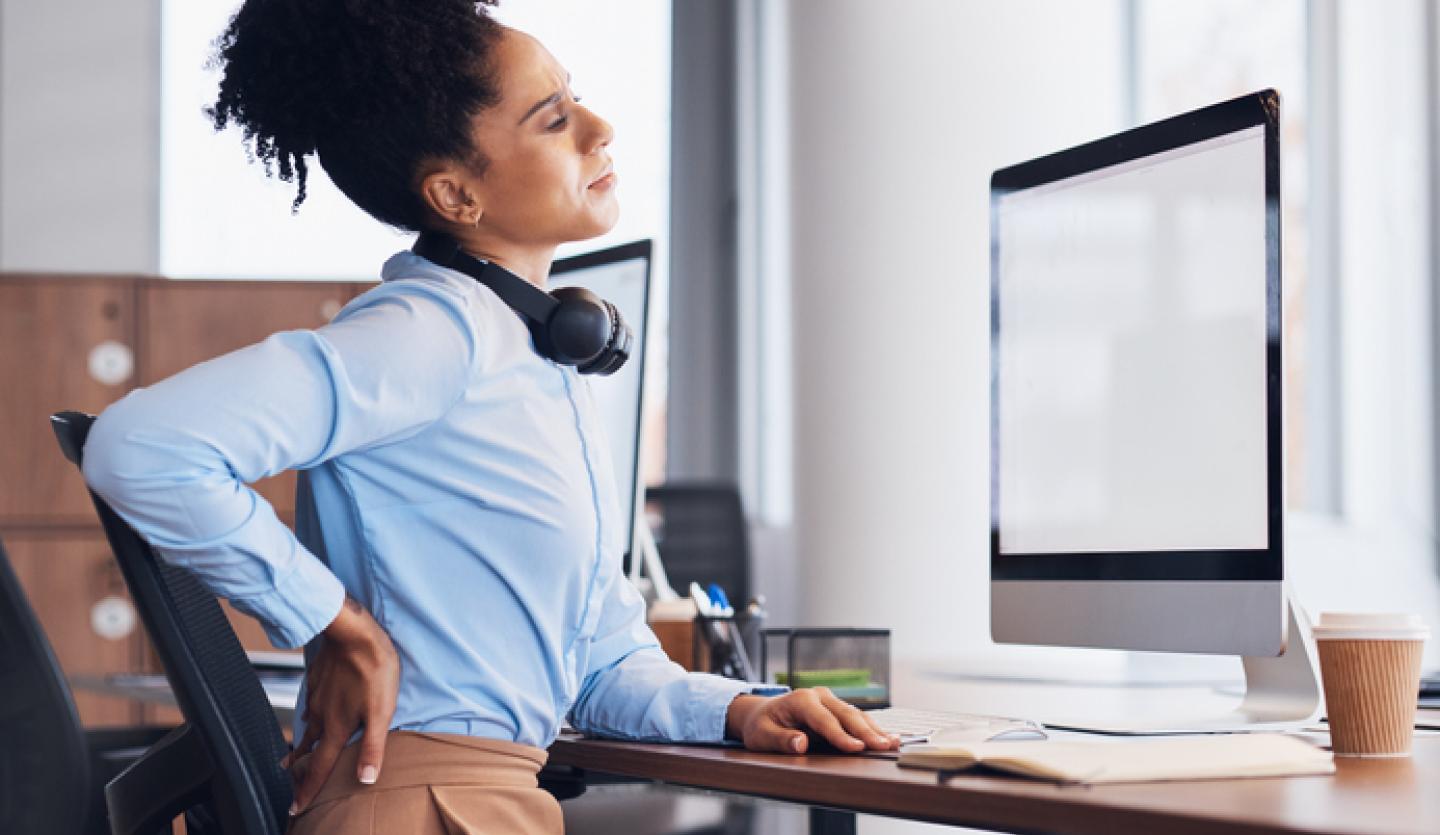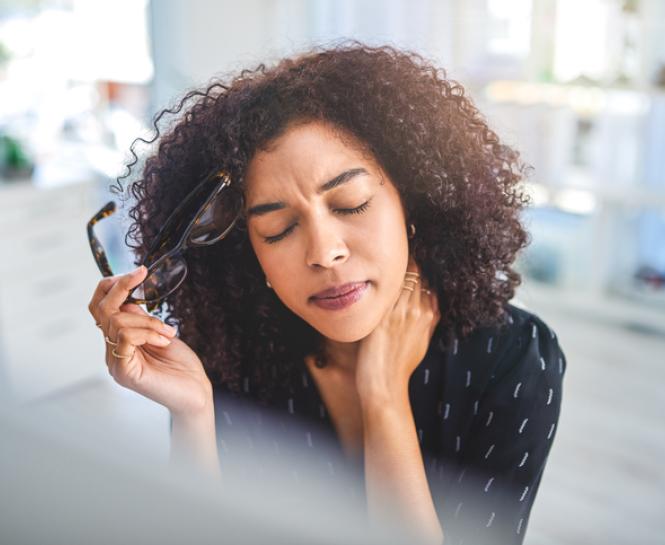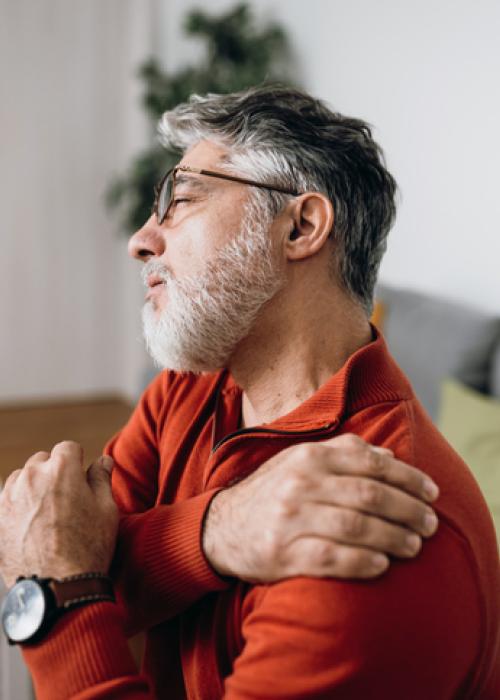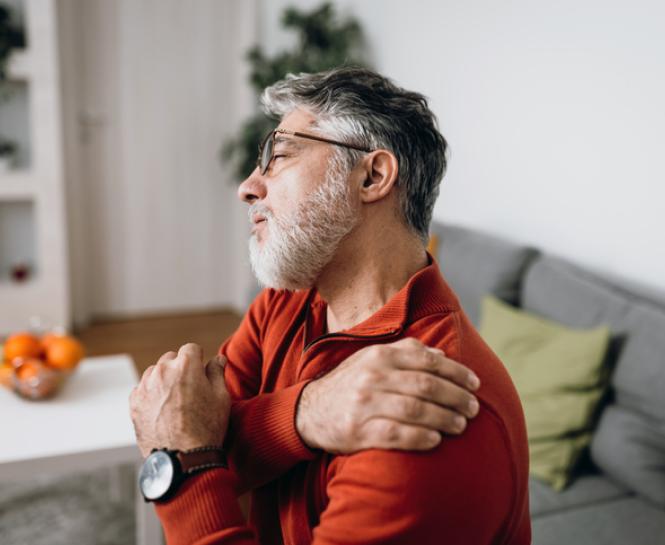“Almost all adults will experience back pain at some point,” said Evan Chernoff, DO, Catholic Health Pain Medicine Physician. “Sleep, stress, sitting too long, lifting something too heavy, exercising too intensely–there are many reasons people complain of back pain.”
He explained that most back pain is treatable without medical intervention. “But it is time to see a doctor if the pain is persistent, recurring and interfering with daily life,” he said.
What is back pain?
Nearly 75-85% of people suffer from low back pain, according to the American Association of Neurological Surgeons.
The lower back—also called the lumbar region—comprises five vertebrae (bones) in the lower part of the spine between the ribs and the pelvis that help support the body and allow movement. Pain can occur in the:
- Vertebrae and disks between the vertebrae
- Joints between the bones of the spine
- Lower back muscles and tendons
- Ligaments around the spine and disks
- Spinal cord
- Nerves
What are the common causes of back pain?
Straining your muscles and ligaments. This often occurs from sudden, awkward movements or repeated heavy lifting.
Poor posture. This typically occurs when sitting for too long, such as working on a computer, watching television, reading, or sleeping.
Osteoporosis. This disease weakens bones, decreases bone mass and dramatically increases your risk of fractures.
Arthritis. Osteoarthritis, the most common form of arthritis, causes deterioration in the cartilage of joints in the lower back as well as bone spurs that can pinch the nerves.
Structural. Disks can bulge, herniate, or rupture, which compresses your nerves and causes back pain.
What are the risk factors for back pain?
- Sedentary lifestyle.
- Age. Back pain is more common in adults age 30 and up.
- Overweight or obese. Excess weight puts stress on the back.
- Diet. Certain foods, like highly processed and high-sugar foods, can cause inflammation.
- Stress. Muscle tension from stress contributes to back pain.
- Sleep. Lack of neck support and certain sleeping positions may cause back pain.
- Smoking.
- Previous history of trauma or car accidents.
What are the symptoms of back pain?
“The most common symptom of back pain is described as an ache in any part of the lower back but can sometimes spread down to other parts of the body like the legs,” said Dr. Chernoff. “You may also find your range of motion and ability to stretch or flex your back is limited.”
He explained that pain often goes away without treatment, but you should call your doctor if the pain lasts longer than a few weeks. Also, call your doctor if you have any of the following symptoms.
- Pain is not relieved from lying down or resting. Or it worsens the pain.
- Muscle spasms continue despite at-home treatments.
- An inflamed or swollen back.
- Loss of bowel and bladder control
- Numbness in the back or any part of the body.
- Fever/chills.
- Unexplained weight loss or weight gain.
- Muscle weakness
How does movement help back pain?
“Movement plays a key role in reducing the risk for stiff joints and a sore back,” said Dr. Chernoff. “Adults need to get up and move around at least once an hour, preferably every 30 minutes. Sitting too long not only hurts your musculoskeletal system but is also linked with health complications like high blood pressure and diabetes.”
Some ways to incorporate more movement into your day include:
- Stand every 30 minutes and do a few stretches.
- Drink your daily recommended amount of water. Getting up to use the bathroom is a helpful way to take a break and move.
- Invest in an under-desk elliptical or treadmill desk.
- Sit on a stability ball to use core muscles to hold your body in place.
- Do calf raises (lift your heels off the ground) or squeeze your glutes while you work or watch TV.
- Take your dog on a walk.
How is back pain treated?
At-home treatments include over-the-counter (OTC) medicine like ibuprofen and topical ointments and applying a hot compress or ice pack to the painful area.
“A-home treatments often help to treat back pain,” said Dr. Chernoff. “Pain that does not go away, or worsening symptoms, requires further evaluation by a doctor or pain management specialist,” said Dr. Chernoff.
Your doctor may prescribe medicine like an anti-inflammatory, recommend physical therapy, or schedule diagnostic tests like an X-ray, MRI or CT scan.
“Some patients may have chronic back pain that requires more extensive treatment by a pain management specialist who will evaluate your medical history and determine a course of treatment specific to your needs,” said Dr. Chernoff. “The goal is to help you live a pain-free life.”
Learn more about Catholic Health's pain management services.







